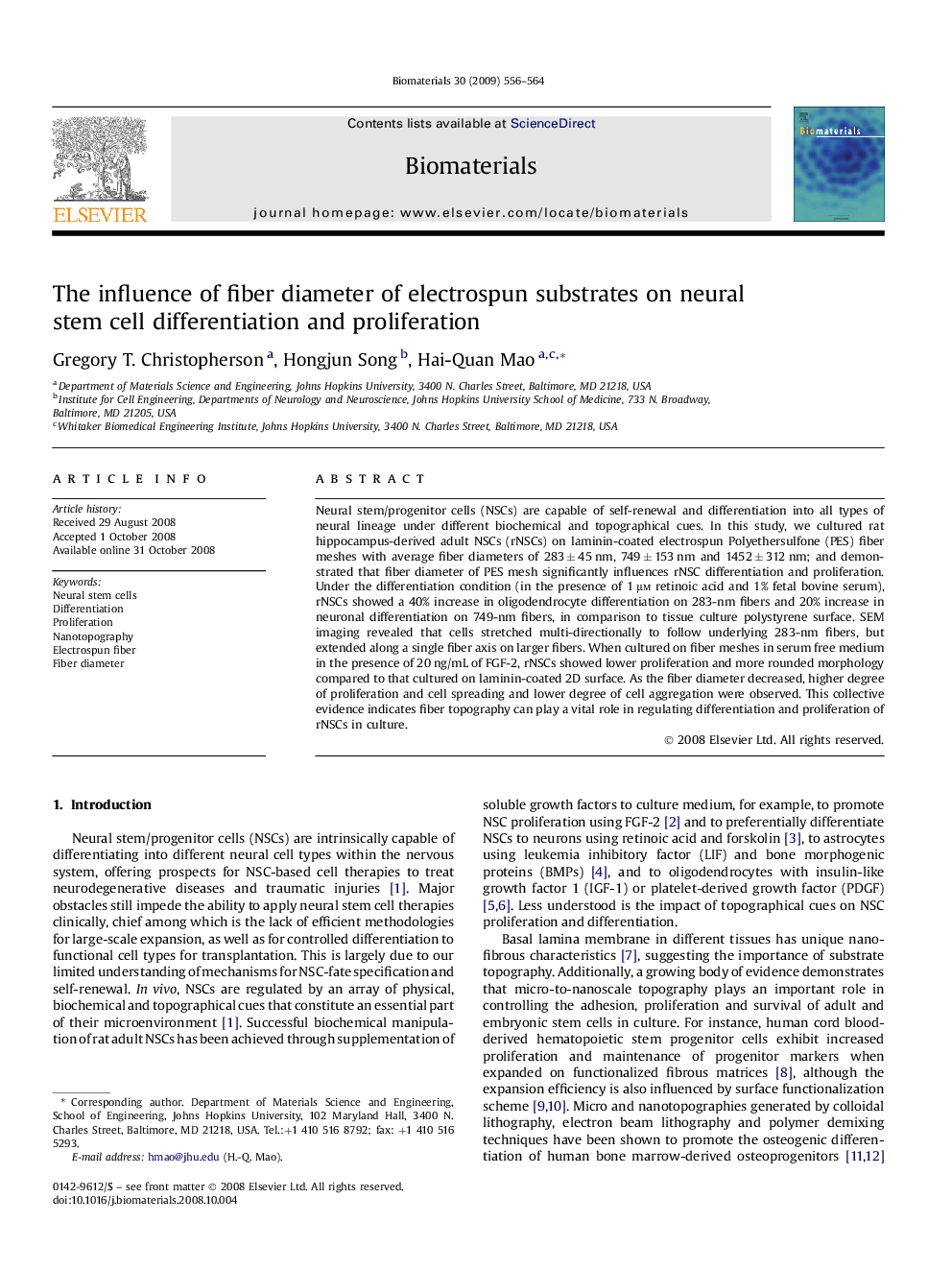| Article ID | Journal | Published Year | Pages | File Type |
|---|---|---|---|---|
| 10829 | Biomaterials | 2009 | 9 Pages |
Neural stem/progenitor cells (NSCs) are capable of self-renewal and differentiation into all types of neural lineage under different biochemical and topographical cues. In this study, we cultured rat hippocampus-derived adult NSCs (rNSCs) on laminin-coated electrospun Polyethersulfone (PES) fiber meshes with average fiber diameters of 283 ± 45 nm, 749 ± 153 nm and 1452 ± 312 nm; and demonstrated that fiber diameter of PES mesh significantly influences rNSC differentiation and proliferation. Under the differentiation condition (in the presence of 1 μm retinoic acid and 1% fetal bovine serum), rNSCs showed a 40% increase in oligodendrocyte differentiation on 283-nm fibers and 20% increase in neuronal differentiation on 749-nm fibers, in comparison to tissue culture polystyrene surface. SEM imaging revealed that cells stretched multi-directionally to follow underlying 283-nm fibers, but extended along a single fiber axis on larger fibers. When cultured on fiber meshes in serum free medium in the presence of 20 ng/mL of FGF-2, rNSCs showed lower proliferation and more rounded morphology compared to that cultured on laminin-coated 2D surface. As the fiber diameter decreased, higher degree of proliferation and cell spreading and lower degree of cell aggregation were observed. This collective evidence indicates fiber topography can play a vital role in regulating differentiation and proliferation of rNSCs in culture.
